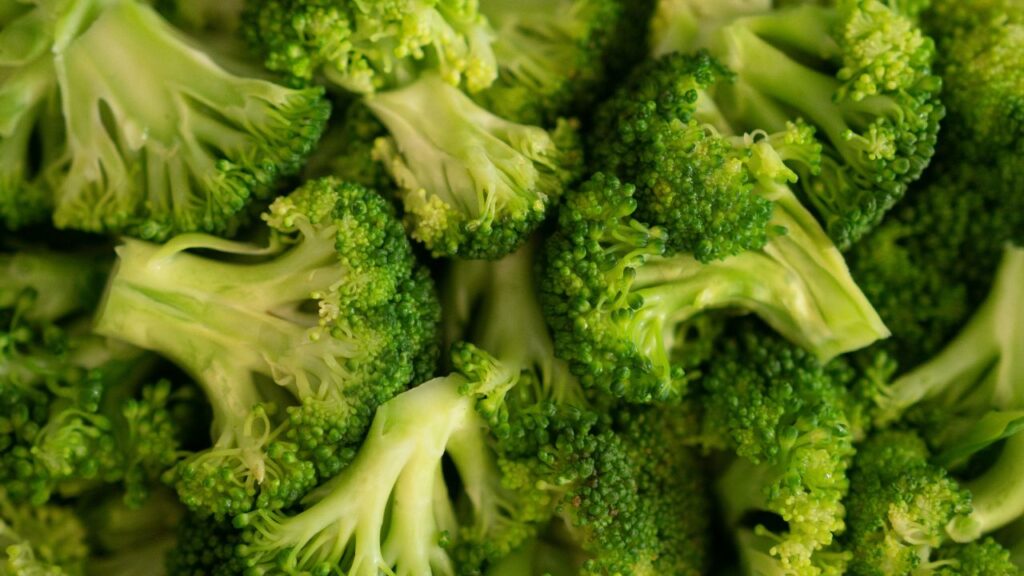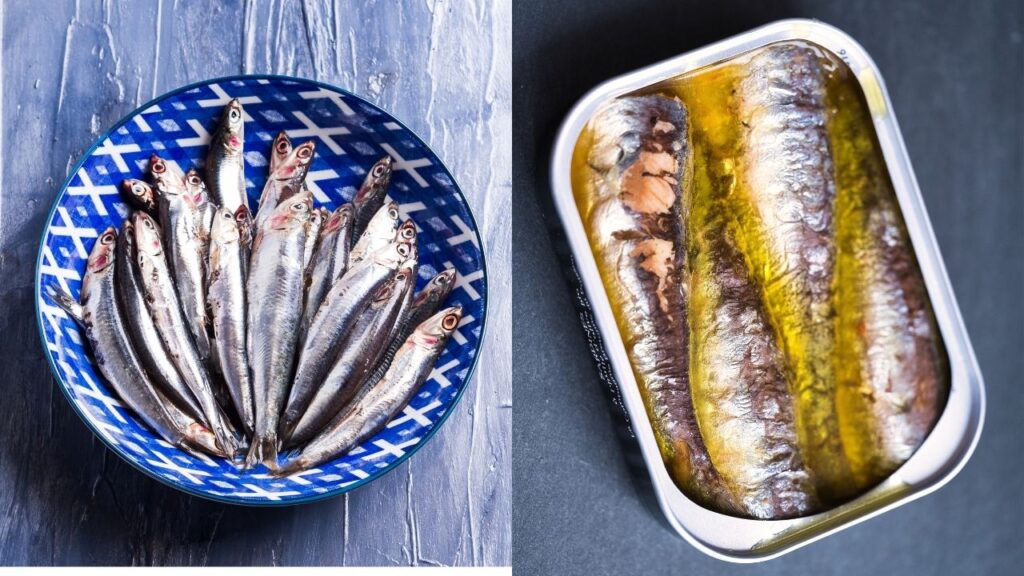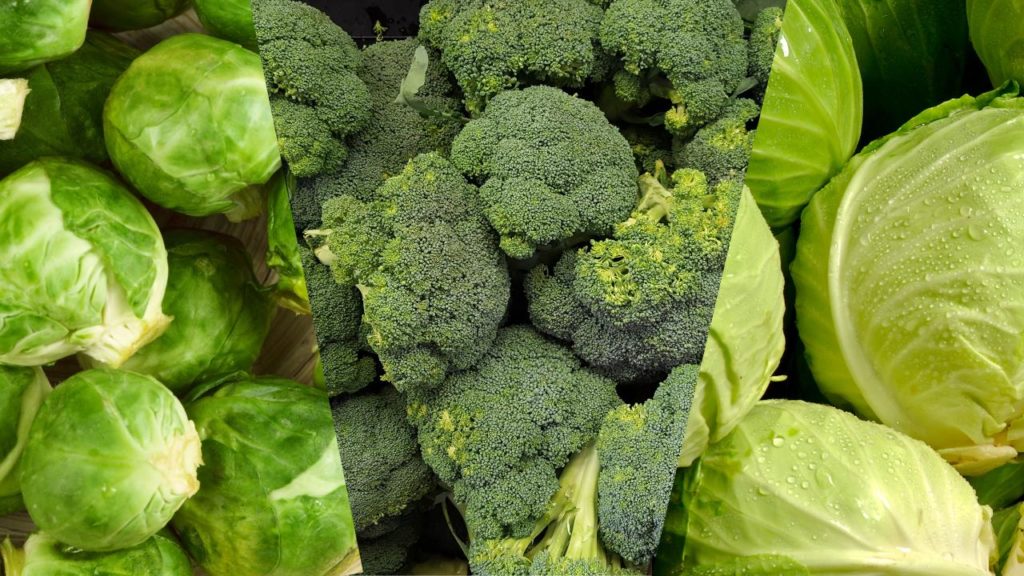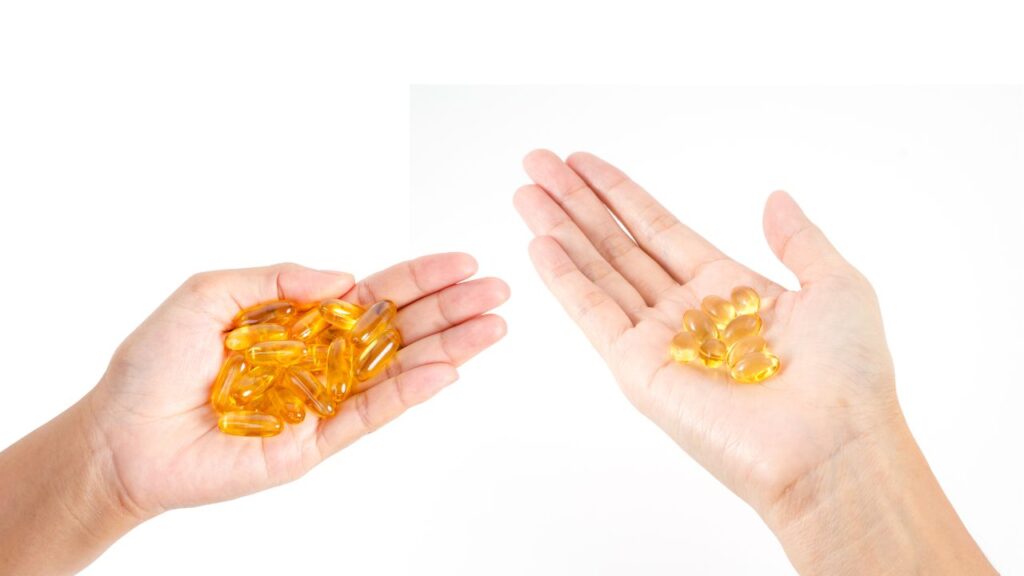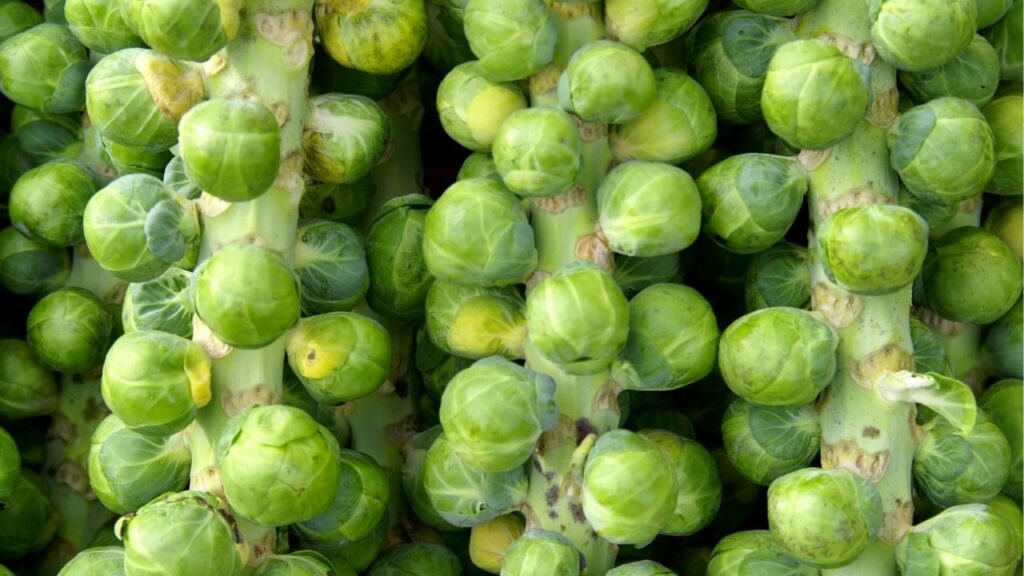Salmon is a popular dietary item full of healthy compounds like omega-3 fatty acids, protein, and astaxanthin that can benefit your dog when given in healthy fully cooked portions.
Key Takeaways
- Dogs can eat salmon and it is safe to do so, as long as it is cooked all the way through.
- You can give your dog about 12 ounces of salmon per 50 pounds (your dog’s weight) per day.
- However, it is best to feed your dog salmon a couple of times a week, not every day.
- Prepare salmon for your dog by removing the skin and bones and simmering it until cooked through.
- Salmon poisoning can affect dogs. This is why it is critical to cook salmon all the way through.
Yes, Dogs Can Eat Salmon
Salmon is a fish that’s nutrient rich and full of essential fats, vitamins, and minerals. It’s a lean source of protein, and is a great alternative to some of the red meat in your dog’s diet. You can buy salmon for dogs in the grocery store and at seafood markets.
It can be purchased fresh, frozen, and even pre-cooked.2
Salmon can be harvested from the wild or grown in fisheries in the aquaculture industry, whereby they’re labeled as “farm-raised”.3,4
There are two main types of salmon, Pacific and Atlantic, with six different species represented.
- Chum salmon (Oncorhynchus keta) were traditionally fed to dog sled teams in North America.3 It’s shown promising health benefits in research and is typically on the lower end of the price range.3,4
- Pink salmon (O. gorbuscha) typically comes canned and preserved in water or oil.3 It is lower in fat and oil than most other species of salmon.3
- Coho salmon (O. Kisutch) has been overfished in years past and has faced significant habitat loss.3 Some populations are considered endangered in their native range, but the introduction of the species to The Great Lakes in the 1960s was highly successful and Coho salmon remain one of the world’s most consumed fish despite their perilous status in parts of their range.
- Sockeye salmon (O. nerka) are primarily found along the coast of Alaska, Washington, and Oregon in the United States.3 The species is subject to very tight fishing regulations and stock monitoring because most populations are considered threatened or endangered.3 However, populations in Alaska appear to be thriving.3
- King salmon (O. tshawytscha) are the biggest species of salmon, and typically the most expensive as well.3
- Atlantic salmon (Salmo salar) are the only species belonging to the Atlantic group, with the above five all being species of Pacific salmon.3 Atlantic salmon are exclusively farm-raised. For this reason, the name Atlantic salmon is commonly interchanged with aquacultured salmon.4
Is Salmon Good for Dogs?
Salmon has a variety of nutritional and health benefits for dogs.
Source of Omega-3 Fatty Acids
One of the most beneficial nutrients found in salmon is omega-3 fatty acids, which support the immune system, decrease inflammation, and can keep your dog’s coat shiny and healthy.5,2
Omega-3 fatty acids have become an important player in the world of nutraceuticals, making them one of the most studied classes of physiologically-active compounds derived from animal products.6
Astaxanthin
Salmon also harbors astaxanthin, a keto-carotenoid that gives salmon their pink and red coloring. Salmon acquire astaxanthin through the microalgae and crustaceans they eat.
The compound reportedly has high levels of antioxidant activity, as well as immunomodulatory, anti-inflammatory, anticancer, antidiabetic, antihypertensive, and antiaging effects.4 It can also have protective effects on the heart and eyes.4
Source of Selenium and other Vitamins and Minerals
Salmon also contains selenium.7 Selenium is an essential trace element that is required in many biological reactions, including ones that protect against oxidative damage in the cell.7
Salmon also has vitamins A, D, and B-complex, as well as zinc, potassium, and magnesium.5,8
Protein
Salmon is an excellent source of protein. Protein levels in salmon compare to those found in chicken, making it a great alternative if your dog is allergic to the latter.1
Other Potential Benefits, Including for Cancer
Anecdotal evidence suggests that salmon can improve skin irritation and allergies, increase joint mobility, and enhance brain function in dogs.8 Rigorous research studies have echoed these findings, and have even shown how salmon can aid in fighting against cancer by boosting the immune system and protecting against chemotherapy side effects.
A preparation from chum salmon was given to female mice over the course of 4 weeks. Compared to the control group, these mice had significantly enhanced lymphocyte proliferation activity, significantly higher natural killer cell activity, and a significantly higher percentage of T-helper cells.9 Collectively, these findings show an incredible boost in the immune system, which is much needed for dogs with cancer.2
Researchers studying ghrelin (a hormone found in the gut that signals when you’re hungry) from chum salmon found that it protected against heart damage brought on by chemotherapy drugs such as doxorubicin.10 Rats that were given ghrelin during the study had greater protection against cardiotoxicity while receiving doxorubicin than rats who did not.10
When to Not Feed Salmon to Dogs
While salmon can have a ton of benefits, there are some things to keep in mind.
Possible Radiation Exposure
The 2011 Fukushima nuclear accident in Japan dumped massive amounts of radiation into the Pacific Ocean. There is concern that fish along the west coast in North America now contain radioactive elements.
While concerning, studies have shown that the amount of radiation contained in salmon harvested from this area poses no health concern to humans,12 and is likely of little concern for your dog as well.
Heavy Metals
Metals like mercury, lead, cadmium, and arsenic are notoriously found in fish because they bioaccumulate. This means that whatever metals are found in the organisms that salmon eat build up in the salmon’s system in higher amounts.11 Your dog also ingests these metals when they consume salmon.
The Antioxidant Debate
One of the key health benefits to salmon is its level of antioxidants.4 There is some concern that antioxidants may be counterproductive for dogs who are undergoing chemotherapy or radiotherapy.2
This doesn’t necessarily mean that your dog can’t have any high antioxidant foods, but you’ll want to consult with your oncologist to make sure a balance is maintained.
Salmon Allergies
Though uncommon, it is possible for dogs to be allergic to salmon. Symptoms of a food allergy can include:13
- Vomiting
- Diarrhea
- Compulsive chewing or licking
- Fur loss
- Ear infections
Note that if your dog is allergic to salmon, they’ll also be allergic to salmon capsules, and likely fish oil capsules as well, so you should steer clear of those products.
How to Prepare Salmon for Dogs
When preparing salmon, start by removing its skin.8 Salmon skin has a lot of fat, which can contain some great nutrients, but this fat can also predispose dogs to developing pancreatitis or stomach upset.
Next, de-bone the salmon. Salmon bones are small and brittle. Your dog can choke on them and they can get lodged in their stomach or intestines.
While seasoning can really add to the flavor profile of salmon, most seasoning mixes have extra salt, oils, nutmeg, and onions in them. In general, you’ll want to serve it plain and avoid seasoning mixes unless you read the labels and see they are free of problematic ingredients. Your pup will think it is delicious even totally plain!
You can poach, grill, roast, steam, or bake salmon.
According to Dr. Demian Dressler’s Dog Cancer Diet, you can give a 50-pound dog about 12 ounces of fish per meal.2
In addition to cooking salmon as is, you can also get creative. You can incorporate salmon into homemade baked dog treats and freeze them for up to two months.8 You can also make salmon patties, which can last in the refrigerator for up to one week or in the freezer up to two months.8
Cook Through to Kill Parasites
Regardless of method, you should cook salmon all the way through. Microbes can accumulate on the surface and inside of meat, even when it is sealed in plastic and stored in the refrigerator.2 Salmonella, trichinella, as well as other parasites, are just a few examples.2 These can make your dog sick, and are especially dangerous when your dog’s immune system capacity is lowered, as is the case during cancer and cancer treatment.2
You may read online that salmon can be frozen for a week to kill parasites and bacteria, but this is not a safe approach for immunocompromised dogs like those with cancer. Always cook frozen salmon.2
Salmon from the Pacific Northwest of the United States may contain Neorickettsia helminthoeca, a parasite that leads to salmon poisoning disease. Symptoms include:
- Fever
- Vomiting
- Diarrhea
- Dehydration
- lymph node enlargement
Salmon poisoning disease can be fatal in as little as 14 days if not treated, but symptoms don’t start until five to seven days after ingestion, so it can be hard to catch.5,8
Ideal Cooking Temps
According to the United States Food and Drug Administration (FDA), fish should be cooked to an internal temperature of at least 145°F.5 You’ll want to adhere to this, but you’ll also want to avoid cooking over 212°F.
Cooking can introduce carcinogens into fish if you cook at temperatures that are too high. Anything over 390°F will create carcinogenic heterocyclic amines.2
Simmering is the best way to ensure that the temperature does not get too high. It also ensures that the fish is tenderly and evenly cooked.2 A food thermometer is a good investment to help accurately track temperature.2
Avoid Smoked Salmon for Dogs
Smoked salmon is a popular choice, but smoked salmon is unfortunately not safe to feed your dog. The smoking process does not kill all of the harmful parasites and bacteria that salmon can harbor.8
Where to Get Salmon for Dogs
Salmon can be sourced from the wild or farm-raised within the aquaculture industry. In order for a fish to be considered “wild caught” it must have been captured by a fishing vessel in its natural habitat.3
Farm Raised Salmon
The ethics and sustainability of farm-raised fish have come a long way in recent decades and farm-raised salmon now account for double the sales of wild-caught salmon.4 Some species, like the pink salmon, are highly regulated with series of standards that must be met before a facility can commercially raise and sell their stock.3
Farm-raised salmon have the benefit of being less likely to contain parasites or environmental pollutants such as radiation, but they may be genetically modified. A company called AquaBounty has found a way to genetically engineer salmon in such in a way that induces hunger in the salmon full time. This causes the salmon to eat more and reach market size faster.14
The United States Food and Drug Administration has declared the fish modified in this manner as safe for consumption,14 but concern over long term effects remain.
Wild-caught and farm-raised salmon also differ in their nutrient levels. For example, astaxanthin was greater in wild salmon than farm raised fish and was more bio-accessible.4
The choice to buy wild-caught or farm-raised salmon is up to you. Each have their pros and cons.
Choosing a Salmon Cut or Product
Boneless filets are best as they alleviate the choking hazard from salmon bones. You can buy salmon filets fresh or frozen. You can even buy salmon pre-cooked, which helps to ensure that you are not accidently giving your dog raw salmon.
Salmon does come in canned form, which can add a level of convenience to preparing your dog’s diet. If you do go canned, it’s best to choose salmon that’s packed in water as opposed to brine or oil.5,8
With any variety, be sure to double check that the salmon your purchase is not pre-seasoned. This includes avoiding pre-cooked smoked salmon, which can contain high levels of salt.8
Cost of Salmon
Depending on time of year and demand, salmon can be cost prohibitive. Market prices can greatly fluctuate, but chum salmon is almost always the most affordable, while king salmon is almost always the most expensive.3
Salmon Oil for Dogs
Your dog can also reap the benefits of salmon via salmon oil capsules. In a study with human subjects, fresh farm-raised salmon and salmon capsules gave them the same amount of omega-3 fatty acids in their blood, but the capsules did not provide as much selenium.7
Salmon oil pills or soft chews can be purchased online or at pet goods stores. Be sure to follow the instructions on your product’s label for dosing.
A word of caution – be sure to check into the manufacturer if you are using salmon oil. Salmon oil has been investigated by Consumer Labs, which found that the contents and amounts listed on the packaging of some brands did not match what was in the actual product. Decreased amounts of nutrients like omega-3 fatty acids won’t give your dog all the benefits that they could get from another more reputable brand.2
- Meat, poultry and fish. Allina Health. https://www.allinahealth.org/health-conditions-and-treatments/eat-healthy/nutrition-basics/protein/meat-poultry-and-fish. Published November 30, 2004. Accessed April 16, 2023.
- Dressler D, Ettinger S. The Dog Cancer Survival Guide. Maui Media; 2011.
- Lee J. 6 types of salmon ranked worst to best. Tasting Table. April 20, 2022. https://www.tastingtable.com/838282/types-of-salmon-ranked-worst-to-best/. Accessed January 12, 2023.
- Chitchumroonchokchai C, Failla ML. Bioaccessibility and intestinal cell uptake of astaxanthin from salmon and commercial supplements. Food Res Int 2017;99(2):936-943.
- Selecting and serving fresh and frozen seafood safely. U.S. Food and Drug Administration. https://www.fda.gov/food/buy-store-serve-safe-food/selecting-and-serving-fresh-and-frozen-seafood-safely#:~:text=Most%20seafood%20should%20be%20cooked,temperature%20of%20145%C2%B0F. Published November 15, 2022. Accessed April 16, 2023.
- Bisen PS. Therapeutic and preventative potential of functional food and cancer. Cancer Med Anticancer Drug 2016:1;e101.
- Pauga M. The effect of consuming farmed salmon compared to salmon oil capsules on long chain omega 3 fatty acid and selenium status in humans [Masters thesis. Aukland, New Zealand: Massey University; 2009.
- No author. Can dogs eat salmon? Trupanion. No publication date available. https://trupanion.com/pet-care/can-dogs-eat-salmon. Accessed on January 12, 2023.
- Yang R, Zhang Z, Pei X., et al. Immunomodulatory effects of marine oligopeptide preparation from Chum Salmon (Oncorhynchus keta) in mice. Mar Drugs 2009;113(2):464-470.
- Kihara M, Kaiya H, Hirai Y, Katayama H, Terao A, Niskikawa M. Salmon acyl-ghrelin increases food intake and reduces doxorubicin-induced myocardial apoptosis in rats, likely by anti-oxidative activity. Peptides 2021;137:170471.
- Moiseenko TI, Gashkina NA. Distribution and bioaccumulation of heavy metals (hg, Cd and PB) in fish: Influence of the Aquatic Environment and Climate. Environmental Research Letters. 2020;15(11). doi:10.1088/1748-9326/abbf7c
- Chen J, Cooke MW, Mercier JF, Trudel M, Kellogg J, Cullen JT. 210Po in Pacific Salmon from the West Coast of Canada and its Contribution to Dose by Ingestion. Health Phys 2019;117(3):248-253. doi:10.1097/HP.0000000000001029/.
- Bajwa J. Food allergies in pets: Signs, diagnosis, and treatment: Vetderm Clinic. VETDERM CLINIC. https://www.vetdermclinic.com/food-allergies-in-pets-signs-common-triggers-diagnosis-treatment/. Published June 21, 2021. Accessed April 16, 2023.
- No author. A better way to raise Atlantic salmon. AquaBounty. No publication date available. https://aquabounty.com/. Accessed on January 12, 2023.
Topics
Did You Find This Helpful? Share It with Your Pack!
Use the buttons to share what you learned on social media, download a PDF, print this out, or email it to your veterinarian.
